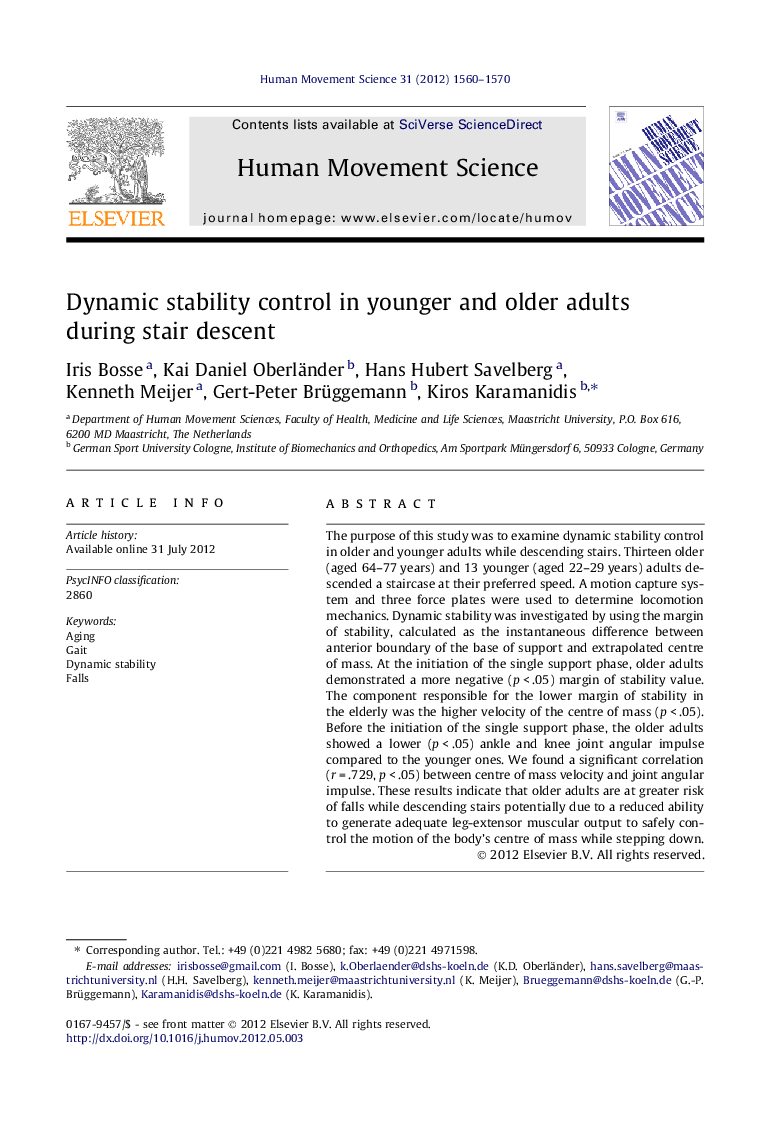| Article ID | Journal | Published Year | Pages | File Type |
|---|---|---|---|---|
| 928517 | Human Movement Science | 2012 | 11 Pages |
The purpose of this study was to examine dynamic stability control in older and younger adults while descending stairs. Thirteen older (aged 64–77 years) and 13 younger (aged 22–29 years) adults descended a staircase at their preferred speed. A motion capture system and three force plates were used to determine locomotion mechanics. Dynamic stability was investigated by using the margin of stability, calculated as the instantaneous difference between anterior boundary of the base of support and extrapolated centre of mass. At the initiation of the single support phase, older adults demonstrated a more negative (p < .05) margin of stability value. The component responsible for the lower margin of stability in the elderly was the higher velocity of the centre of mass (p < .05). Before the initiation of the single support phase, the older adults showed a lower (p < .05) ankle and knee joint angular impulse compared to the younger ones. We found a significant correlation (r = .729, p < .05) between centre of mass velocity and joint angular impulse. These results indicate that older adults are at greater risk of falls while descending stairs potentially due to a reduced ability to generate adequate leg-extensor muscular output to safely control the motion of the body’s centre of mass while stepping down.
